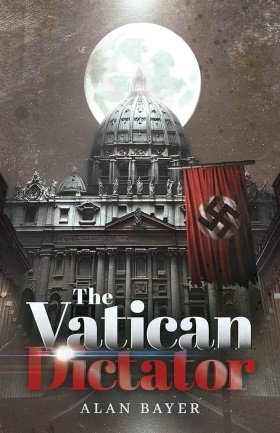“The same, please.”
“And you, Count?”
“Cognac as well, thank you.”
Once the Cognac was served, Spellman wasted no time in addressing the most pressing matter at hand. “Have arrangements been made for Archbishop Pacelli’s meeting with President Roosevelt?”
“We are in the process of coordinating that,” Genevieve explained. “As you are aware, President Roosevelt is in the throes of his reelection campaign. His itinerary has him crisscrossing the United States rallying support in key cities.”
“This meeting is of utmost importance. Have you received any feedback from his staff regarding his availability?” Spellman pressed.
“We have been in contact with Joseph Kennedy, a close advisor to Roosevelt. They maintain regular communication, speaking at least twice a week without fail,” Genevieve assured.
The bond between FDR and Kennedy had been forged in the crucible of political ambition, solidified during the tumultuous period of FDR’s 1932 presidential bid. Kennedy’s financial support, both personal and procured, was instrumental to Roosevelt’s campaign, a fact that did not go unnoticed by the future president. This led to Kennedy’s appointment as the chairman of the Securities and Exchange Commission in 1934. Despite his brief tenure from 1934 to 1935, Kennedy’s leadership proved pivotal in establishing the SEC as one of the most respected institutions resulting from the New Deal, a testament to Roosevelt’s ability to fulfill his campaign promises. This shared history had deepened the men’s mutual trust and respect, creating a bond that was unshakable.
“What’s your read on Joseph Kennedy?” Pacelli asked.
“Mr. Kennedy is orchestrating a luncheon here in New York towards the month’s end. I am confident he can secure a meeting with the President for you then, Archbishop,” Genevieve assured.
Eugenio’s gaze shifted to Count Galeazzi, silently seeking confirmation that the proposed timeline would be workable with his calendar. The count’s nod was all the affirmation he needed. His visit to the United States was only supposed to last for two weeks, but this crucial meeting warranted flexibility.
“I am deeply grateful for your efforts, Duchess. I eagerly await your confirmation of this pivotal meeting,” Pacelli expressed, his head bowing in a gesture of gratitude for Genevieve’s tireless work on his behalf.
“I’ve also arranged a meeting with Joseph Kennedy for you, Your Excellency.”
“Mr. Kennedy’s reputation precedes him. I appreciate your efforts.”
With a gentle clink, Pacelli placed his glass on the coffee table then rose from the plush couch. This subtle gesture was a clear signal the meeting was concluded. Galeazzi, Spellman, and Brady followed suit, rising in unison.
“My staff will guide you to your accommodations,” Genevieve offered, gesturing towards the waiting staff ready to attend to their every need. “Should you require anything, please do not hesitate to call for me.”
9 October 1936
Inisfada Estate
Manhasset, Long Island
In the seclusion of the study, Galeazzi, Spellman, and Pacelli convened, their minds focused on the intricate web of the archbishops’s upcoming itinerary. This was no ordinary schedule, but a strategic chessboard of meetings with cardinals stationed throughout the country’s pivotal swing cities that held President Roosevelt’s political fate in the balance. These encounters were designed to underscore the importance of the president securing another term. The Vatican’s alliance with Roosevelt and the United States would prove to be yet another critical chess piece in the grand game of global politics.
13 October 1936
New York City
The archbishop, the bishop, and the count embarked on their journey from the Inisfada Estate, their destination being Boston for Pacelli’s inaugural meeting. Their route took them through the heart of Hartford, Connecticut and included a strategic pitstop at St. Joseph’s College where they were to rendezvous with Bishop Maurice F. McAuliffe. Hartford was important in its own right, with its potential to sway the upcoming election in FDR’s favor.
The meeting with Bishop McAuliffe mirrored the one with Cardinal Hayes, a dance of power and manipulation. This bishop, too, was presented with incriminating photographs, a ticking time-bomb that threatened to explode his reputation if he dared defy the archbishop’s demands.
Spellman and Galeazzi, the architects of this intricate web of control, had gathered damning evidence against all the key swing states’ cardinals and bishops, making Pacelli’s task of securing loyalty at these personal meetings a smooth operation.
Pacelli, a staunch advocate of absolute leadership, propagated the doctrine of autocratic control, extending his iron grip even to the far reaches of the United States. This pattern of dictatorial extortion acted as the blueprint for every encounter he had with the cardinals and bishops during his so-called “informal” tour of America.
21 October 1936
Washington, DC
“Eugenio,” Count Galeazzi began, his tone heavy with the weight of the news he was about to deliver, “due to the president’s relentless campaign schedule, our initial meeting plans have been cancelled.”
Pacelli’s brow furrowing in concern. “Have alternative arrangements been made?”
“Unfortunately, FDR will not be available to meet until after the election. If we are to accommodate, this will extend your visit to nearly a month.”
“That’s quite the significant extension,” Pacelli noted, his mind already racing from the implications.
“Spellman and I have devised a plan: we propose you embark on an air tour of the United States, a press tour that will herald you as the highest-ranking Vatican official to ever grace American soil. The media will be in a frenzy over your extended visit,” Galeazzi explained, a glimmer of excitement in his eyes.
“Ah. You’ve already scheduled these meetings in key voting districts, I presume?”
“Indeed. Chicago, Cleveland, South Bend, St. Paul, Minnesota, San Francisco, Los Angeles, St. Louis, Cincinnati, Syracuse—and finally back to New York City where you will meet with FDR at his residence,” Galeazzi detailed, his voice steady and confident.
“That’s quite an extensive itinerary,” Pacelli mused, his mind whirling with the enormity of the task ahead.
“Your presence in these pivotal voting blocs will undoubtedly secure President Roosevelt’s reelection.”
“When do we depart?” Pacelli asked, ready to face the challenge head-on.
“Tomorrow.”
22 October 1936

























